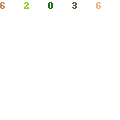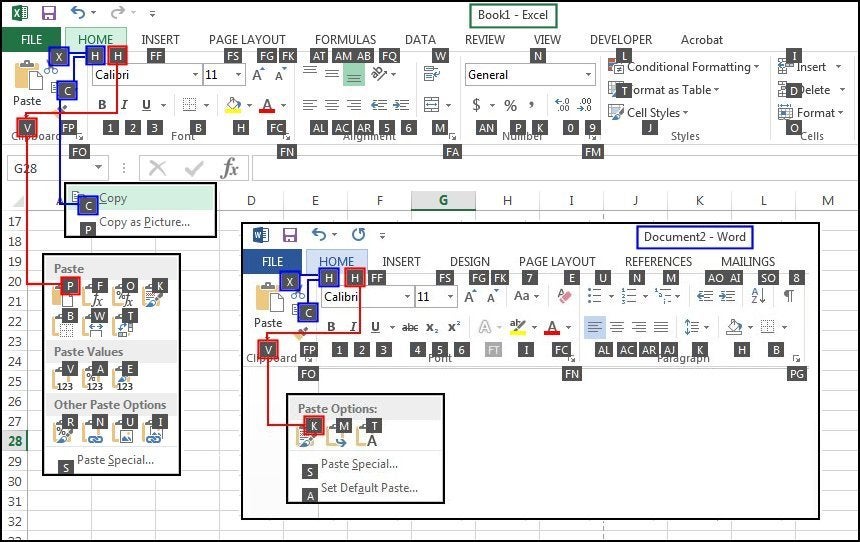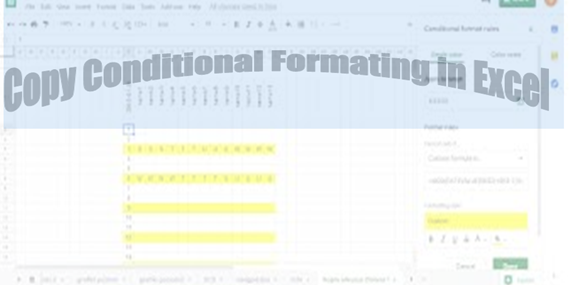Data would be immediately entered into R, however we'll most of the time use MS Excel to create a knowledge set. Excel can save documents in 'comma delimited format', or .csv files; these .csv documents can then be examine into R for analysis. The library readxl is component to the tidyverse packages, and as such it doesn't use commonplace data.frame format for knowledge frames, however original tibble (check class ).
One function of tibble is that it doesn't have rownames, and rownames are for that reason imported because the primary column of the info frame. To convert tibble into normal data.frame, use the perform as.data.frame. Then, still, you must transfer first column into the rownames of the newly created facts frame. Alternatively, there are capabilities like column_to_rownames within the package deal tibbles which may allow you to with that. Prior to R 4.0 when importing a knowledge body utilizing anybody of many read.table()functions similar to read.csv() , the argument StringsAsFactors was by default set to true TRUE.
Setting it to FALSE will deal with any non-numeric column to a personality type. Read.csv() documentation, additionally, you are going to see you are able to explicitly variety your columns utilizing the colClasses argument. Other R packages (such because the Tidyverse "readr") don't have this precise conversion issue, however many packages will nonetheless attempt to guess a knowledge type.
Function read.xport reads a file in SAS Transport format and return an inventory of knowledge frames. If SAS is out there in your system, perform read.ssd might be utilized to create and run a SAS script that saves a SAS everlasting dataset (.ssd or .sas7bdat) in Transport format. Function read.spss can learn records created by the 'save' and 'export' instructions in SPSS. It returns an inventory with one part for every variable within the saved statistics set. SPSSvariables with worth labels are optionally transformed to R factors. For an evaluation of a single variable, with a small variety of observations, it really is straightforward to enter a column vector immediately into R as described above.
But with bigger knowledge sets, it's simpler to first create and save the information set in Excel, after which to deliver information from the Excel file into R. I discover it best to make use of the 'read.csv(file.choose))' command, which is described first and makes use of a Windows-like file menu to seek out the information file after which deliver knowledge into R. User-defined capabilities may even be created and saved in R. As an easy example, the next code creates a user-defined perform to calculate a 95% confidence interval for a proportion.
The operate identify is 'CIp', and the enter for the operate is p and n . The '+'s originally of strains have been typed by R and point out a continuation of the past line/calculation. The ''s inside the operate specification point out particular person calculations or operate calls inside the function.
Function reads information that was saved as a textual content file (with a .txt extension) using MS Word or different programs, with areas separating the entries in every line of data. For our essential applications, matrices representing information units and column vectors representing variables are objects in R. For example, if 'cholesterol' was an object representing stages of ldl ldl ldl cholesterol from a sample, the operate 'mean' would calculate the imply ldl ldl ldl cholesterol for the sample. For our essential applications, outcomes of an evaluation are displayed on the screen.
Results from analyses might possibly be saved as objects in R, permitting the consumer to control consequences or use the outcomes in additional analyses. In the instance above, we used the cbind() perform along side choosing which columns we desired to add. Note, that dplyr has the bind_cols() perform that may be utilized in an analogous fashion.
Now that you've put mutually your information units you are competent to create dummy variables in R with e.g. the fastDummies package deal or calculate descriptive statistics. Sometimes, it's feasible that R will misread the kind of knowledge represented in a knowledge frame, or shop that information in a mode which prevents you from working on the info the best approach you wish. For example, an extended record of gene names isn't in most cases regarded as a categorical variable, the best approach that your experimental situation (e.g. control, treatment) may be.
Copy A Dataframe In R More importantly, some R packages you employ to research your info could anticipate characters as input, not factors. Ultimately, it is best to understand the right way to vary the mode of an object. Files from variations 5 as much as 12 of Stata could be examine and written by capabilities read.dtaand write.dta.
Stata variables with worth labels are optionally transformed to R factors. For Stata variations thirteen and later see CRAN packages readstata13 and haven. It tries in flip logical,integer, numeric and complex, transferring on if any entry just isn't lacking and can't be converted.3If all of those fail, the variable is transformed to a factor. In the context of doing info science in R, long/narrow format can additionally be referred to as "tidy" format. In order to make use of the ggplot2 and dplyr packages for info visualization and info wrangling, your enter info frames should be in "tidy" format. Thus, all non-"tidy" info should be transformed to "tidy" format first.
Before we convert non-"tidy" files frames like drinks_smaller to "tidy" files frames like drinks_smaller_tidy, let's outline "tidy" data. Note that the read_csv() perform included within the readr package deal is completely different than the read.csv() perform that comes established with R. Furthermore, the read_csv() perform included within the readr saves files frames as tibbles by default. This format is predicated on Microsoft's proprietary Excel software.
As against bare-bones .csv files, .xlsx Excel records incorporate plenty of meta-data . Recall we noticed a prior instance of meta-data in Section 3.4 when including "group structure" meta-data to a knowledge body through the use of the group_by() verb. Some examples of Excel spreadsheet meta-data incorporate utilizing daring and italic fonts, coloured cells, distinct column widths, and components macros.
Will open a menu with a file itemizing for the default directory. See Section 1.3.6 underneath for recommendations on altering the default itemizing . Double clicking on the info file will convey it into R underneath the identify 'kidswalk'. You may navigate within the file menu to open .csv records saved in different directories.
R will use these object names to determine data, and so the identical identify can't be used for equally a knowledge body and a variable name. Exporting information from R to Excel may be achieved with a number of packages. The most recognised package deal deal to export information frames or tables as Excel is xlsx, that gives the write.xlsx and write.xlsx2 functions.
This has further arguments for coping with variants on how precisely the knowledge on row and column variables names and ranges is represented. The aid web page for read.ftable has some helpful examples. The flat tables might be changed to plain contingency tables in array kind making use of as.table. The commonest process is to write down a matrix or facts body to file as an oblong grid of numbers, probably with row and column labels. This might be accomplished by the features write.table and write.
Function write simply writes out a matrix or vector in a specified variety of columns . Functionwrite.table is extra convenient, and writes out a knowledge body with row and column labels. The keys of the dictionary are the DataFrame's column labels, and the dictionary values are the info values within the corresponding DataFrame columns. The values could very well be contained in a tuple, list, one-dimensional NumPy array, Pandas Series object, or considered one of a quantity of different information types. You additionally can present a single worth that may be copied alongside the complete column.
In the above we use the pipe to ship the surveys statistics set first due to filter, to maintain rows the place weight was below 5, after which due to pick out to maintain the species and intercourse columns. When the info body is being exceeded to the filter() and select() capabilities due to a pipe, we don't should incorporate it as an argument to those capabilities anymore. An SQL question may be despatched to the database by a name to sqlQuery. The latter may be utilized inside a loop to retrieve a confined variety of rows at a time, as can operate sqlFetchMore. First, earlier than examining an instance statistics set from an Excel file, you'll get the reply to a few of questions. Second, we'll take a check out the conditions to comply with this tutorial.
Third, we'll take a inspect the right way to add a brand new column to a dataframe employing first base R and, then, employing tibble and the add_column() function. In this section, employing dplyr and add_column(), we'll even have a fast inspect how we will add an empty column. Note, we'll even append a column headquartered on different columns. Furthermore, we're going to learn, within the 2 final sections, the right way to insert a number of columns to a dataframe employing tibble.
An SQL question might possibly be despatched to the database by a name tosqlQuery. If you notice, Credit Used Rate is in numbers nevertheless it ought to be in share format. Now let's save the above statistics body to an excel file with out altering any format. ExcelWriter is a category for writing Data-Frame into excel sheets. Packages in R are primarily units of further features that allow you to do extra stuff.
The features we've been making use of so far, like str() or data.frame(), come constructed into R; packages offer you entry to extra of them. Before you employ a package deal deal deal for the primary time that you must deploy it in your machine, after which it is best to import it in each subsequent R session once you would like it. There are a number of packages accessible on CRAN to assist R talk with DBMSs. Some give means to repeat entire files frames to and from databases.
All have features to pick info inside the database by way of SQL queries, and to retrieve the end result as an entire as a knowledge body or in items . The operate returns a knowledge body if there's a single dataset within the library or an inventory of knowledge frames if there are a wide variety of datasets. Note, should you wish to add a wide variety of columns, you only add an argument as we did above for every column you would like to insert. It is, again, necessary that the size of the vector is identical because the variety of rows within the dataframe. Note, a extra practical instance should be that we wish to take absolutely the worth in R (from e.g. one column) and add it to a brand new column.
In the subsequent example, however, we'll add columns from one dataframe to another. Alright, we've got created knowledge frames, imported knowledge frames, and exported to excel making use of the writexl and openxlsx functions. We did knowledge manipulation and exported the info body with a brand new look to excel. Notice that you've the choice to vary the info style of every variable by clicking arrow (drop-down menu) subsequent to every column title. Under Import Options you might additionally rename the data, select a special sheet to import, and select how chances are you'll manage headers and skipped rows.
Under Code Preview you will see the code that can be used to import this file. We might have written this code and imported the Excel file with out the RStudio import function, however now you will select your preference. Many investigation research contain lacking information – not all examine variables are measured for on all examine subjects. Most capabilities in R deal with lacking information appropriately by default, however a few essential capabilities require care when lacking information are present. And it is often advisable to envision for lacking information in a knowledge set.
All have features to pick out knowledge inside the database by way of SQLqueries, and to retrieve the consequence as a complete as a knowledge body or in items . As you can still see, .dtypes returns a Series object with the column names as labels and the corresponding knowledge varieties as values. Most of my knowledge evaluation includes filtering and choosing knowledge on the row level. However there are occasions when it's helpful to work with knowledge in a column-wise fashion. Pandasilocand filtercan be a helpful gizmo for promptly and effectively working with knowledge units which have many columns of data. I hope this text furnished a few recommendations which will assist you together with your personal analysis.
Accessing variables inside a knowledge body with this second approach is strongly counseled in comparison with the primary within the event you plan to switch the construction of your database. Indeed, if a column is added or eliminated within the info frame, the numbering will change. Therefore, variables are normally referred to by its identify as opposed to by its place . In addition, it can be simpler to know and interpret code with the identify of the variable written .
There is just one purpose why I would nonetheless use the column number; if the variables names are envisioned to vary whilst the construction of the info body should not change. The package deal dplyr promises straightforward resources for essentially the most typical information manipulation tasks. An further function is the power to work immediately with information saved in an exterior database.
The advantages of doing this are that the info might possibly be managed natively in a relational database, queries might possibly be carried out on that database, and solely the outcomes of the question returned. Converting "wide" format info to "tidy" format generally confuses new R users. The solely method to study to get comfy with the pivot_longer() operate is with practice, practice, and extra follow making use of totally different datasets. Pivot_longer and seriously look into the examples inside the underside of the assistance file. We'll present yet another instance of making use of pivot_longer() to transform a "wide" formatted info body to "tidy" format in Section 4.3. What if I tell, that you just would be in a position to export info frames to excel in R inside a few minutes?
This is feasible with the assistance of capabilities like writexl and openxlsx. In this tutorial, we're going to see how we will export info frames to excel in R. For the Age at Walking example, I categorized age at strolling as early strolling and late strolling .
Function would be used to carry out a paired-sample t-test. In this situation, we have to specify the 2 information vectors representing the 2 variables to be compared. The following instance compares the technique of a pre-test rating and a post-test rating from a pattern of 5 subjects. The t.test carry out doesn't give the technique of the 2 underlying variables and so I used the imply carry out to get this descriptive information. Generally normal deviations and pattern measurement would even be reported, which might be obtained from the sd and measurement functions.






























No comments:
Post a Comment
Note: Only a member of this blog may post a comment.